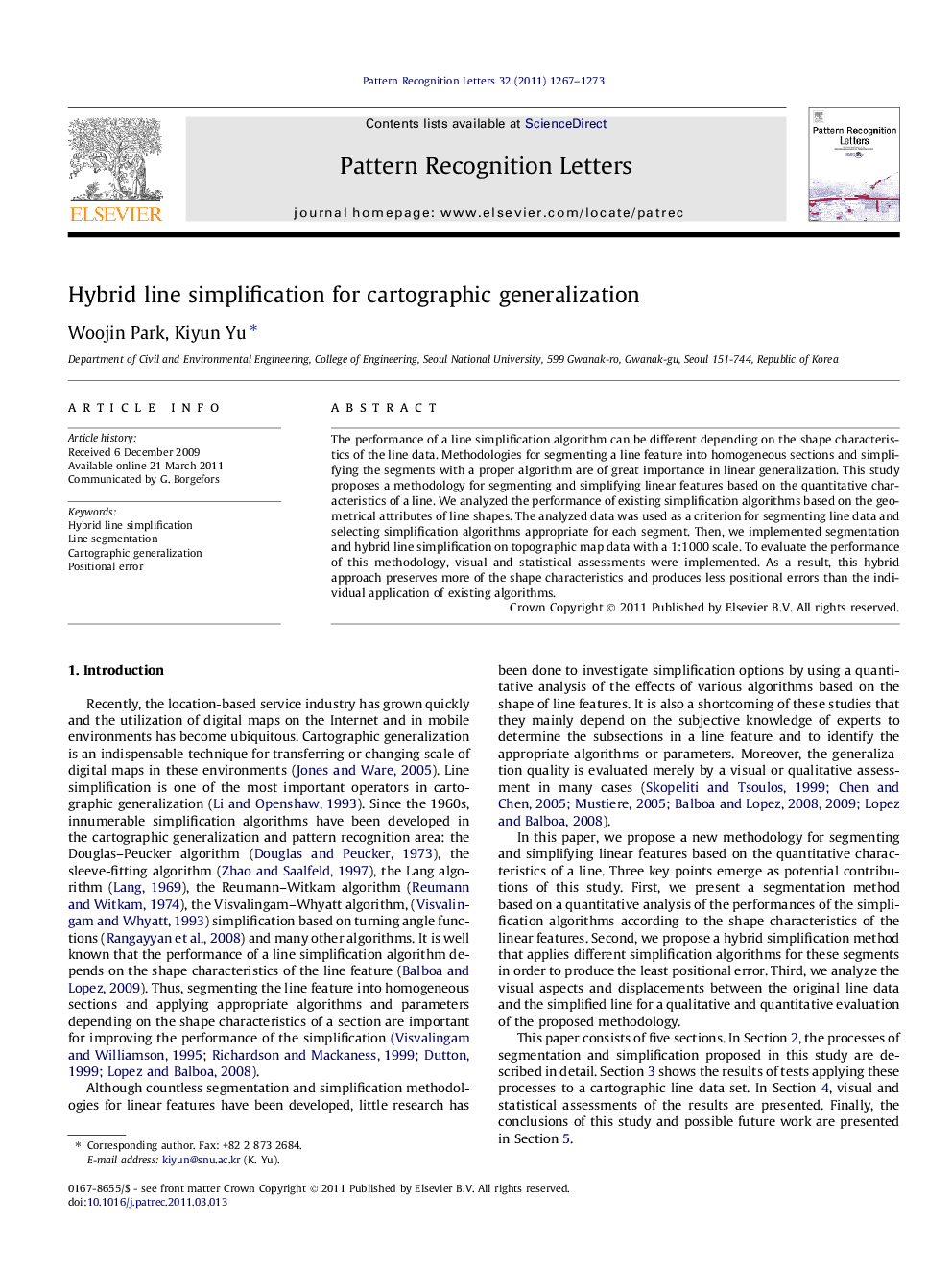| Article ID | Journal | Published Year | Pages | File Type |
|---|---|---|---|---|
| 534227 | Pattern Recognition Letters | 2011 | 7 Pages |
The performance of a line simplification algorithm can be different depending on the shape characteristics of the line data. Methodologies for segmenting a line feature into homogeneous sections and simplifying the segments with a proper algorithm are of great importance in linear generalization. This study proposes a methodology for segmenting and simplifying linear features based on the quantitative characteristics of a line. We analyzed the performance of existing simplification algorithms based on the geometrical attributes of line shapes. The analyzed data was used as a criterion for segmenting line data and selecting simplification algorithms appropriate for each segment. Then, we implemented segmentation and hybrid line simplification on topographic map data with a 1:1000 scale. To evaluate the performance of this methodology, visual and statistical assessments were implemented. As a result, this hybrid approach preserves more of the shape characteristics and produces less positional errors than the individual application of existing algorithms.
Graphical abstractFigure optionsDownload full-size imageDownload high-quality image (41 K)Download as PowerPoint slideHighlights► Three line simplification algorithms are combined by the hybrid methodology. ► Line features are segmented and classified to the most suitable algorithm. ► Each segment is simplified by the suitable algorithm and merged again. ► Results of hybrid simplification are better than those of the individual application.
